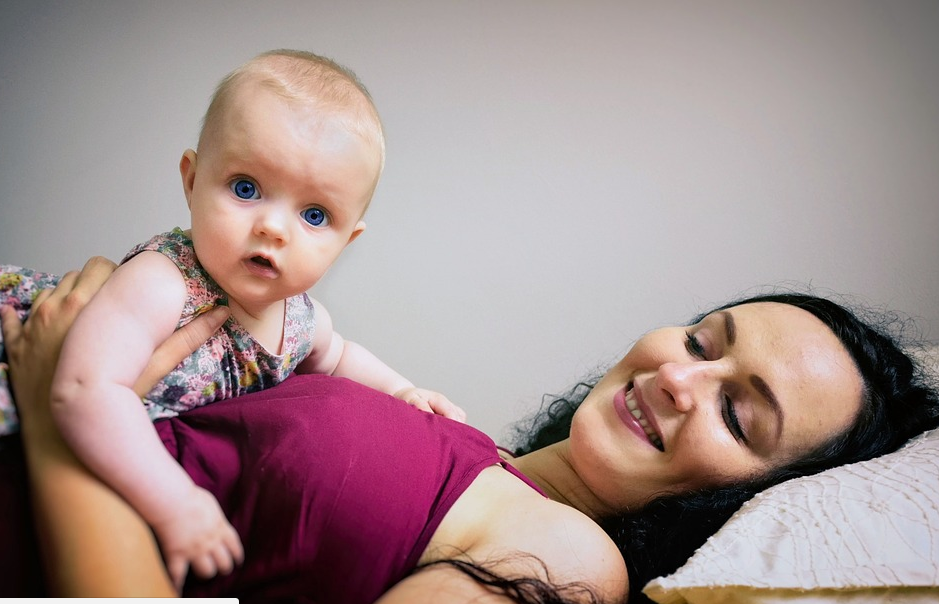Ethiopia
Unlike in any other part of the world, mothers are celebrated with a three-day feast in Ethiopia, called Antrosht. While there is no fixed date, the festival is held every year in the fall at the end of the rainy season, usually in October or November. Families get together, prepare a traditional hash and then sit down and enjoy it together. The mothers and daughters anoint themselves with butter, and men sing. Might be a fun way to liven up brunch, no?
Nepal
In the mountainous nation of Nepal, Mother’s Day is called Mata Tirtha Aunsi. The celebration usually falls in the first month of the local calendar, Baishakh, which roughly corresponds to April. For the holiday, many people make a pilgrimage to the Mata Tirtha village in Kathmandu. People throughout the country show their appreciation for their mothers by giving gifts and (that thing all moms want most) spending time with her, often traveling long distances to do so. For those who have lost their mothers, it is a day to visit their graves with offerings.

Nepalese Hindu devotees come from across the country to bathe, offer prayers and leave offerings at the Matathirtha Temple during the event, which honours mothers who have passed away. / AFP PHOTO / PRAKASH MATHEMA
Argentina
In Argentina, Mother’s Day is celebrated on the third Sunday of October, during peak springtime in the Southern Hemisphere. Originally the day coincided with the commemoration of the Maternity of the Virgin Mary, which was celebrated on October 11. In the 1960s the Catholic holiday was moved to January 1, but Argentinians stuck with their unique October date. As in many places, the day sees families spending time together, with gifts, cards and flowers presented to mothers.
Thailand
In Thailand, mothers are celebrated on August 12, the day of Queen Sirikit’s birthday — she is considered to be the mother of all the nation. On this national holiday, the air is filled with the sweet perfume of jasmine, as people traditionally give their mothers a bouquet of the fragrant flowers, whose white color symbolizes the purity of a mother’s love for her child. The day is also one of public festivities in honor of the queen, with fireworks near the Grand Palace in Bangkok.

Serbia
Mother’s Day in Serbia and some surrounding countries comes with a fun and unusual tradition. Part of a series of holidays — including Children’s Day and Father’s Day — taking place on three consecutive Sundays, Mother’s Day is observed in December.
On the day of Children’s Day, kids are tied together and must promise to behave well to be untied. The following Sunday, for Mother’s Day, it’s Mom’s turn to be tied up; to be set free, she must give her children treats and small gifts. Finally, the next Sunday, it’s the father’s turn. He’s tied up until he gives his family Christmas gifts. Then everyone sits together to celebrate Christmas. That is, if the kids are still getting along after being tied to each other….
Bolivia
Fact: All mothers are superheroines. But moms in Bolivia get some extra recognition. Día de la Madre is tied to a historical event. During the War of Independence in 1812, in the small town of Cochabamba, hundreds of women protected their children from the Spanish invasion, as their husbands, sons and brothers were killed in the conflicts. On May 27, a group of women took up arms and bravely fought against the Spanish on San Sebastian hill. Although the women were overtaken, their courage is celebrated lavishly every year on the 27th of May, no matter what day of the week it falls on.
Egypt
Egypt was the first Arab country to celebrate Mother’s Day, in 1956. The idea was proposed by journalist Mustafa Amin in 1943; at first it was ignored, but he started promoting it after hearing the story of a devoted mother ignored by her son. She sacrificed to put her son through medical school, but when he became a doctor he married and didn’t show her gratitude. Gamal Abdel Nasser, Egypt’s president at the time, eventually accepted the holiday. It happens every March 21, marking the first day of spring, and has since then spread to various countries of the region.
Panama
Oh, the joy of being a mother! Panama takes motherhood so seriously that the day is actually a national holiday. Happening every December 8, Mother’s Day in Panama coincides with the Feast of the Immaculate Conception. On that day and the night before, small impromptu bands go from house to house singing songs to mothers. In small towns, men cook the meals while women get ready for a full day of celebration.
U.K. and Ireland
Celebrated since the 16th century, Mothering Sunday falls on the fourth Sunday during Lent, three weeks before Easter. The tradition originated when people returned to their hometown to attent the Laetare Sunday service in their “mother” church, to mark the middle of the Lent season. On their way, children and youths would pick up flowers to present them in church or to their mothers. After the service, people spend time with their families enjoying food and the traditional Simnel cake, a light fruit cake filled and covered with marzipan.









